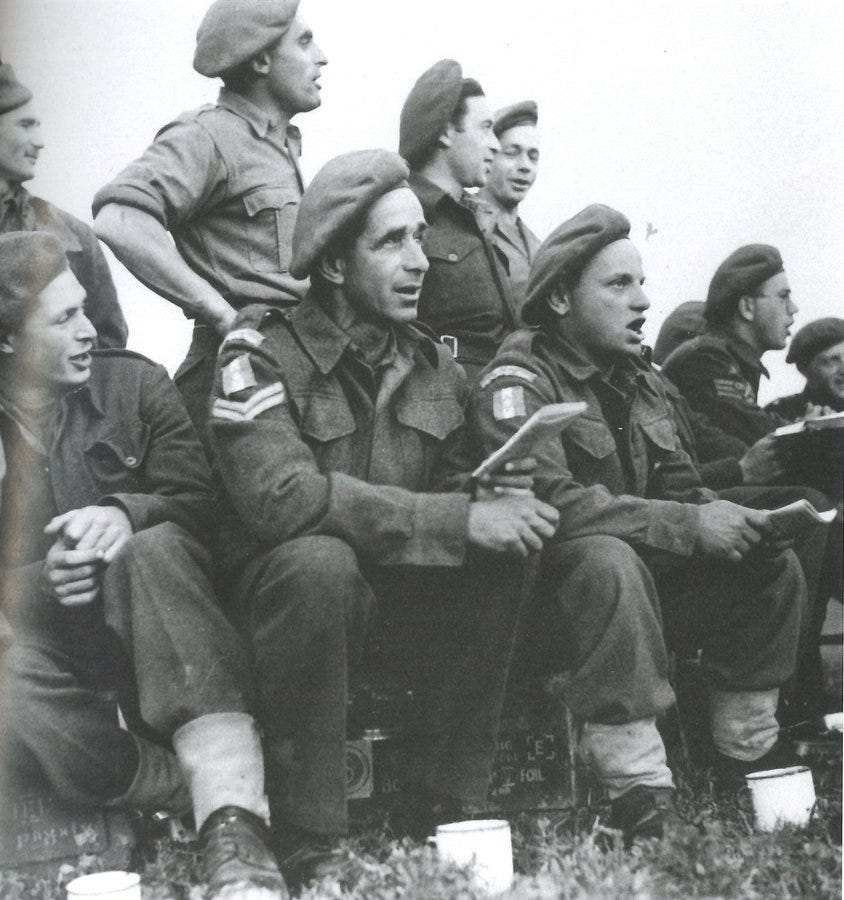Liberation Day in Italy and the Resistance
April 25 marks Liberation Day in Italy, and with it reflections on the myths surrounding the resistance. We are also reminded of the risks Ukrainian resistance groups face on a daily basis in the occupied areas.
The liberation of Italy began in Sicily in 1943 with operation HUSKY. For almost two years, Allied troops fought their way from the south of the peninsula to the north with the aid of the forward units, the U.S. OSS (X-2), and British SOE, and partisans of all political stripes, who provided intelligence about German defensive positions, and stay-behind units hiding within the civilian population.
Italian folklore around wartime resistance movements sets the narrative that the “anti-fascist” movement was principally guided by the forces on the left, and this has been politicised over time. Not true: The partisans were republicans, monarchists and anarchists, ecologists, separatists, femminists, and yes, communists and socialists, who formed the bulk of the resistance forces in the centre and north west urban areas.
Marco Fattorini mentions the Hebrew Brigade, composed of 5,000 volunteers coming from numerous nations, who helped the Allies breach the Gothic Line, paving the way for the liberation of the Padana area—Modena, Padova and Pavia.
Based in Udine, and established in December 1943, one of the largest units (10 brigades) was the Osoppo Battalion, which operated along the border with Yugoslavia in northeastern Italy. They acted as sentinels between 1945 to 1948 when it was believed that the Soviets may have invaded Italy from Yugoslavia (at the time Tito was still in alignment with Moscow), or used the Volante Rosso and Communist brigades, in Milano, to overthrow the government in an insurrection. As per U.S. counter-intelligence, the NKVD had a station in Milano from which they provided directives to the Italian Communists.
On April 25, Mussolini, a column of over 100 of his men, and thousands of fascist troops left Milano to make their escape heading for Switzerland. Mussolini and his lover, Clara Petacci, were apprehended and then executed on April 28 in Piazzale Loreto, Milano. This set off a wave of revenge killings of fascist leaders and party members. Very few fascists were officially sentenced by the Italian courts, and most were reabsorbed in civilian life as well as the Italian public administration.
By 1945, Italy was near economic and social collapse, mirroring conditions across Europe: Italian institutions, its industrial base, and military and civilian infrastructure had to be rebuilt. There was also a civil war. Italy’s population was starving and out of work: Italian industrial and agricultural capacity was down by more than 30% and its naval shipyard industry by 50%. The United States and Great Britain came to Italy’s aid owing to its geostrategic position in the Mediterranean, and because it was necessary to keep Italy within the Atlantic Pact. It could not become a Soviet client or satellite state. The Marshall Plan saved Italy and Italians between 1945 and 1952, providing essential funding to kick start the regeneration of Italy’s institutions, infrastructure and civilian commerce, a fact that is often forgotten.
Russian aggression against Ukraine demonstrates that resistance movements, and their battle for the liberation of their homeland, are more relevant than ever as is the need for allied assistance.
I had a long conversation with Zarina Zabrisky, a journalist based in Odesa, who is currently gathering material for an up-coming documentary on the Ukrainian resistance in Kherson. She disclosed that a spontaneous resistance, hobbled together by civilians in Kherson at the onset of the full-scale invasion in February 2022, encountered the same difficulties as resistance movements in the Second World War, including Italy: the lack of organisation on a national level, and the lack of arms and supplies to the local units.
Notwithstanding their initial difficulties, however, Ukrainian civilians formed resistance units in the occupied territories, thanks to the extensive horizontal network of civilian volunteer organisations in Ukraine. One example is the Kherson-9, whose members have been illegally arrested by the Russians, and are now imprisoned in Rostov-on-Don. The resistance fighters in Ukraine face danger on a daily basis, and they do so because they are motivated by the desire for freedom. They cannot be enslaved.
While we in the West are not currently subjected to direct physical aggression and danger as Ukrainians are, we do, however, face an array of other risks and attacks: economic warfare, cyberwarfare, psychological, political and information operations, lawfare, and a variety of other grey zone operations that Russia and its allies undertake to undermine our sovereign states and create chaos in our daily lives.
I’ve been doing some preliminary reading regarding the concept of total defence—a combination of national armed forces and civilian non-violent resistance—which seeks to meet the current needs of the security realities and challenges facing Western powers and their publics. It starts with the awareness that the concept of warfare has changed: the lines between hot and cold warfare have blurred into a grey zone, and our strategy and tactics should recognize this reality.
It’s something to think about on April 25 in Italy, and when considering the miracles being performed by the Ukrainian resistance today. As the Italian Association of Stay-Behind Volunteers proudly say in their motto: “We are the first line of resistance of democracy and its institutions”.








